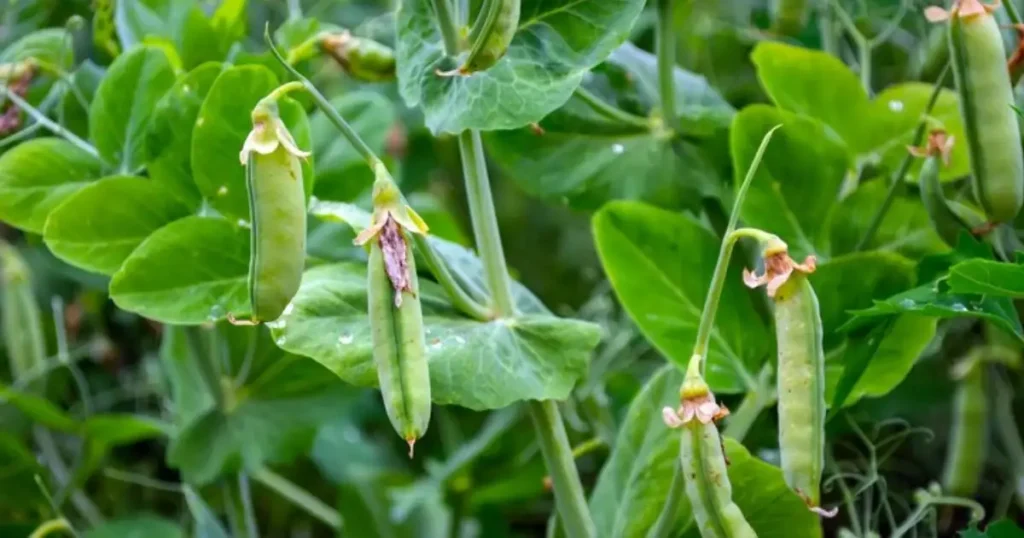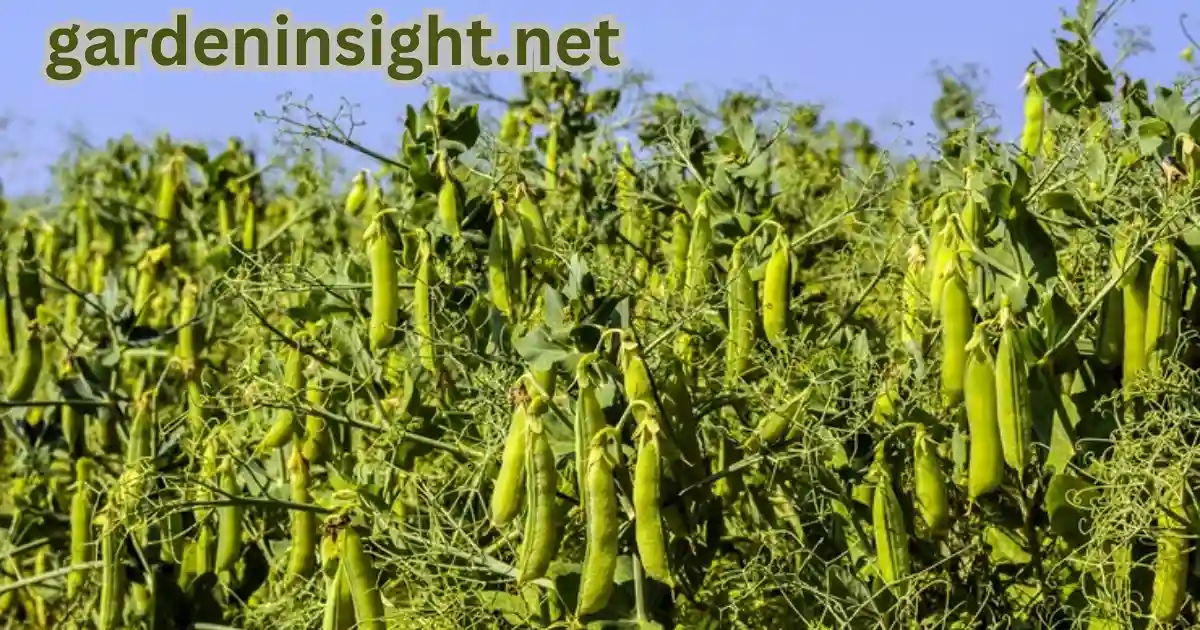Growing peas in garden is a rewarding experience. These delicious, versatile vegetables are relatively easy to cultivate, even for beginner gardeners.
This guide will walk you through the process, from planting to harvesting, ensuring you enjoy a plentiful supply of fresh peas.
Choosing the Right Pea Variety

Before you start planting, it’s important to select the right pea variety for your garden. There are several types of peas, including:
- Shelling Peas: These peas have inedible pods, and you eat the peas inside. They are often the sweetest type.
- Snap Peas: These peas have edible pods and plump peas inside. They offer a crisp texture and sweet flavor.
- Snow Peas: These peas have flat, edible pods and small peas. They are often used in stir-fries.
Consider your climate, available space, and preferred taste when choosing a pea variety. Some popular choices include ‘Sugar Snap’ (snap pea), ‘Little Marvel’ (shelling pea), and ‘Oregon Sugar Pod II’ (snow pea).
Preparing Your Garden for Peas
Peas thrive in well-drained soil with a pH between 6.0 and 7.0. Choose a sunny spot in your garden that receives at least 6-8 hours of sunlight per day. Prepare the soil by loosening it and incorporating compost or aged manure to improve fertility and drainage.
Planting Peas
Peas are typically planted in early spring, a few weeks before the last frost. You can also plant a second crop in late summer for a fall harvest.
- Direct Sowing: Sow pea seeds directly into the ground about 1 inch deep and 1-2 inches apart. Space rows about 1-2 feet apart.
- Trellising: Peas are climbing plants and need support. Provide a trellis, fence, or other structure for them to climb on. This will improve air circulation and make harvesting easier.
Caring for Your Pea Plants
- Watering: Keep the soil consistently moist, especially during germination and pod development.
- Fertilizing: Peas generally do not require heavy fertilization, but a side dressing of compost or a balanced fertilizer can be beneficial.
- Weeding: Keep the area around your pea plants free of weeds to reduce competition for nutrients and water.
- Pest and Disease Control: Watch for common pea pests like aphids and pea weevils. Diseases like powdery mildew can also affect pea plants. Take preventative measures and address any problems promptly.
Harvesting Peas
Peas are ready to harvest when the pods are plump and the peas inside are well-developed. Pick the pods regularly to encourage continued production.
How to Plant Green Peas in Garden
Planting green peas follows the same general guidelines as other pea varieties. Choose a variety suited to your climate and growing conditions. Ensure the soil is well-prepared and provide adequate support for the vines. Green peas are typically harvested when the pods are full and the peas are bright green.
How to Plant Sweet Peas in Garden
Sweet peas are grown for their beautiful, fragrant flowers, not for eating. They prefer cooler temperatures and well-drained soil. Provide a sturdy support structure for these climbing plants. Deadhead spent flowers regularly to encourage more blooms.
Best Way to Grow Peas in Garden
The best way to grow peas involves several factors: choosing the right variety, preparing the soil properly, providing adequate support, and consistent watering. Regular harvesting also promotes continued production.
How to Plant Peas in Square Foot Garden
Growing peas in a square foot garden is possible, especially with bush varieties. Choose a square foot area that receives ample sunlight. Plant the peas closer together than you would in traditional rows, following the spacing guidelines for your chosen variety. Provide a small trellis or support structure within the square foot area.
How to Plant Peas in Raised Garden Bed
Raised garden beds offer excellent drainage and make it easier to control soil conditions. Peas thrive in raised beds. Prepare the soil in the raised bed as you would for in-ground planting. Provide a trellis or other support structure along the edge of the raised bed.
How to Plant Peas in a Small Garden
Even if you have a small garden, you can still grow peas. Choose bush varieties that don’t require as much space. Plant them in containers or along a fence or wall where they can climb. Vertical gardening techniques can maximize space in small gardens.
Conclusion
Growing peas in garden can be a delightful and productive experience. By following these guidelines, you can enjoy a bountiful harvest of fresh, delicious peas.
Remember to choose the right variety, prepare your soil, provide support for the vines, and water consistently. With a little care and attention, you’ll be enjoying the fruits (or rather, the peas!) of your labor in no time.
Whether you have a large garden or a small balcony, growing peas is a great way to bring fresh, homegrown flavor to your table.
FAQs
Some of the frequently inquired questions about ways to grow peas in garden are given as follow:
What is the best time to plant peas?
Peas are typically planted in early spring, a few weeks before the last frost. You can also plant a second crop in late summer for a fall harvest.
How much sunlight do peas need?
Peas need at least 6-8 hours of sunlight per day.
Do peas need a trellis?
Yes, peas are climbing plants and need support. A trellis, fence, or other structure will allow them to grow vertically and improve air circulation.
How often should I water peas?
Keep the soil consistently moist, especially during germination and pod development.
When are peas ready to harvest?
Peas are ready to harvest when the pods are plump and the peas inside are well-developed. Pick the pods regularly to encourage continued production.
